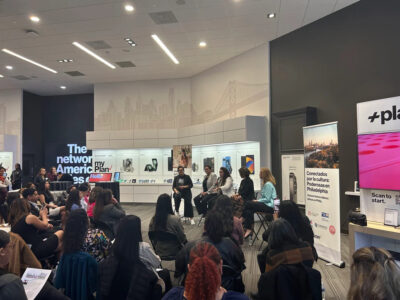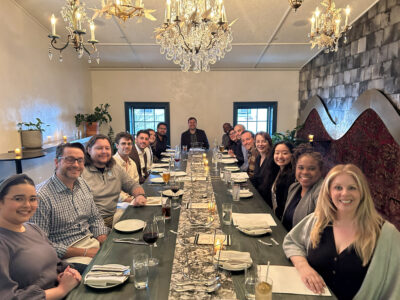When Daniel Gillen arrived at Haverford College his freshman year, he had to be an educator as well as a student.
Gillen, 21, is only the second legally blind student to attend Haverford. Yet, since that first student graduated nearly six decades ago, Gillen has needed to be proactive in ensuring he receives appropriate accommodations.
In his first year, sometimes an online quiz didn’t have the correct text to speech formatting, Gillen said, “which meant that I was unable to do what was expected of me as a student.”
Gillen, who became blind after both of his retinas detached when he was less than one year old, is one of a growing class of Haverford students who have disabilities. Sixty to 70 students will need special accommodations in the coming school year, said Coordinator of Access and Disability Services (ADS) Sherrie Borowsky, who said more and more students with disabilities have been enrolling at the school over the last few years. That uptick coincides with a push to improve the school’s technological services so that they better accommodate individuals of different abilities, Borowsky said.
For Gillen, that meant that his professors tried to brainstorm creative ways for him to participate fully in classes of a variety of disciplines. When Gillen, a double major in physics and music, enrolled in Phonetics and Phonology during his sophomore year, linguistics professor Brook Danielle Lillehaugen began to devise ways that Gillen could engage even when she digressed from her lesson plan.
She worked with Gillen, other students and staff to create a tactile International Phonetic Alphabet (IPA) magnet-board system, a device upon which Gillen could arrange magnetic embossed tiles to reflect information Lillehaugen wrote on the chalkboard.

The magnet board developed by Daniel Gillen, professor Brook Danielle Lillehaugen and a team of students and staff. (Photo by Brook Danielle Lillehaugen)
“This type of collaboration between students, professors, and staff is something I value about working at Haverford,” said Lillehaugen, who was the lead author of a paper on the magnet-board in the academic journal Language.
It’s now available in the Haverford library for students, instructors or other colleges to borrow.
Like Gillen, other students with disabilities have been outspoken about receiving appropriate services. One student, Carl Sigmond, who has cerebral palsy and communicates using assistive technology, needed to advocate for himself like Gillen when he first arrived on campus in 2009.
A computer science major, Sigmond also incorporated accessibility into his senior thesis. For his project, Sigmond worked with associate computer science professor John Dougherty to compare different forms of human-to-computer text input, an area of study he has continued to pursue since graduating in 2013.

Professor John Dougherty. (Photo via Haverford)
According to Dougherty, who became interested in accessible technology through having multiple children with disabilities, Haverford has improved greatly in terms of accessibility in recent years.
“Haverford is very good at being reactive,” said Dougherty, who has presented on accessible computing at multiple symposiums.
Dougherty’s work has also attracted students who do not have experience themselves in accessible technology, but who are eager to learn more about it. This past year, Dougherty advised four senior computer science majors who researched different aspects of technological accessibility.
Dorvil Gabriel, 21, wrote his thesis on the Myo armband, a gesture recognition device built by First Round Capital-backed Thalmic Labs that allows its user to control technology via wrist and forearm motions.
“The two main focuses of my thesis were whether the Myo could be used for typing, and whether the techniques and inputs used for typing could apply to people with disabilities,” said Gabriel. “Someone who is missing a hand, for example, can use the script I designed to type.”
Marcus Firmani, 21, another one of Dougherty’s advisees, also researched gesture recognition for his thesis.
“I was particularly interested in gesture recognition technologies in general and how they could be applied to virtual and augmented reality,” said Firmani.
Like Sigmond, many of Dougherty’s students continue to study their thesis topics or accessible technology in general in their professional lives.
“The ultimate goal of any interface should be to provide a seamless means of human-computer interaction for as many people as possible,” Firmani said.
Join the conversation!
Find news, events, jobs and people who share your interests on Technical.ly's open community Slack

Philly daily roundup: A better coffee supply chain; Philly Tech Week returns; Apply to Pennovation Accelerator

Philly daily roundup: Startups want office culture; New Venture Lab cohort; Penn Med's new AI leader

What AI means for the future of SaaS: Reality vs. hype

